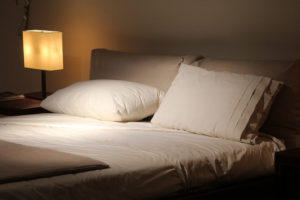 There’s a lot more than stuffing and springs in your mattress, it can also be home to dust mites and other allergens like pet dander and mold. Although dust mites are invisible to the naked eye, these critters can exacerbate asthma symptoms and shouldn’t be ignored. About a quarter of Americans have allergies, and two-thirds of that group have dust mite allergies, according to allergist Dr. James Sublett.
There’s a lot more than stuffing and springs in your mattress, it can also be home to dust mites and other allergens like pet dander and mold. Although dust mites are invisible to the naked eye, these critters can exacerbate asthma symptoms and shouldn’t be ignored. About a quarter of Americans have allergies, and two-thirds of that group have dust mite allergies, according to allergist Dr. James Sublett.
What are Dust Mites?
Dust mites thrive in humid climates, and eat flakes of human skin, which settle in your mattress. They can also live in bedding, carpets, curtains and upholstered furniture.
Symptoms of Dust Mite Allergies
Individuals with dust mite allergies are allergic to the protein in dust mite feces and body remnants. Indicators of dust mite allergies are frequent nasal drip, sinus headaches, sneezing in the morning, and waking up with itchy eyes. If you’re not sure if you have a dust mite allergy, you can contact your allergist about taking an allergy test for confirmation.
Protection Against Dust Mites
Before you toss out your mattress and opt for a hammock, you can rest easy knowing there are a few simple ways to avoid irritation from dust mites. Wash your bedding weekly and consider investing in mattress and pillow covers that protect against dust mites. Hypoallergenic bedding can protect against pet dander, pollen, mold, dust mites, and other allergens. If you’re allergies are severe, you may also need to frequently clean curtains, carpets, and other upholstered furniture to minimize dust mite exposure.





















